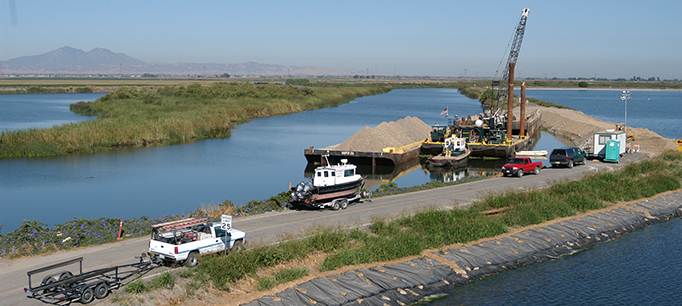When the sun is shining and our rivers are low, we tend to forget about levees. However, you can’t ignore the 1,100 miles of levees in the Sacramento-San Joaquin Delta. These levees—dikes, actually—have high water against them 24 hours a day, 365 days a year. They protect the islands of the Delta from flooding that would occur daily because island elevations are well below sea level—more than 25 feet below in some places.
This video is a simulation of what would happen if a severe earthquake hit the western Delta, causing widespread failure of levees. The simulation is a worst-case scenario: failure occurs in the summer when freshwater inflow from rivers is low. (The most recent large flooding in the Delta took place on a clear day in June 2004.) As the water drains from the channels into the islands, it pulls saltwater into the Delta from San Francisco Bay. This renders the water too salty for use by the 25 million people more than 3 million acres of farms that rely upon it.
The management of Delta levees has been a policy challenge for many decades. Most levees are managed by local reclamation districts. They are of varying quality. Yet these levees affect the reliability of water supplies from the Delta. They protect lives, property, and important infrastructure, and they control river and estuarine habitat.
In the 2009 Delta Reform Act, the legislature assigned the Delta Stewardship Council the task of determining how to invest state funds in the levees. As highlighted in our recent report Paying for Water in California, the cost of improving Delta levees ranges from $1.6–$2.4 billion, while available state bond funds total less than $400 million. Recognizing that needs far outstrip available resources, the council has chosen to set policies for prioritizing investments. This is both necessary and fraught with controversy because it ultimately determines whose needs are to be met and whose will not.
PPIC, with our research partners at the UC Davis Center for Watershed Sciences, have published numerous assessments of this problem. Over the next few months we plan to post summaries of this work to help inform policymaking and prioritization. Come rain or shine, flood or drought, Delta levees—and the resources they protect—need the state’s attention.


